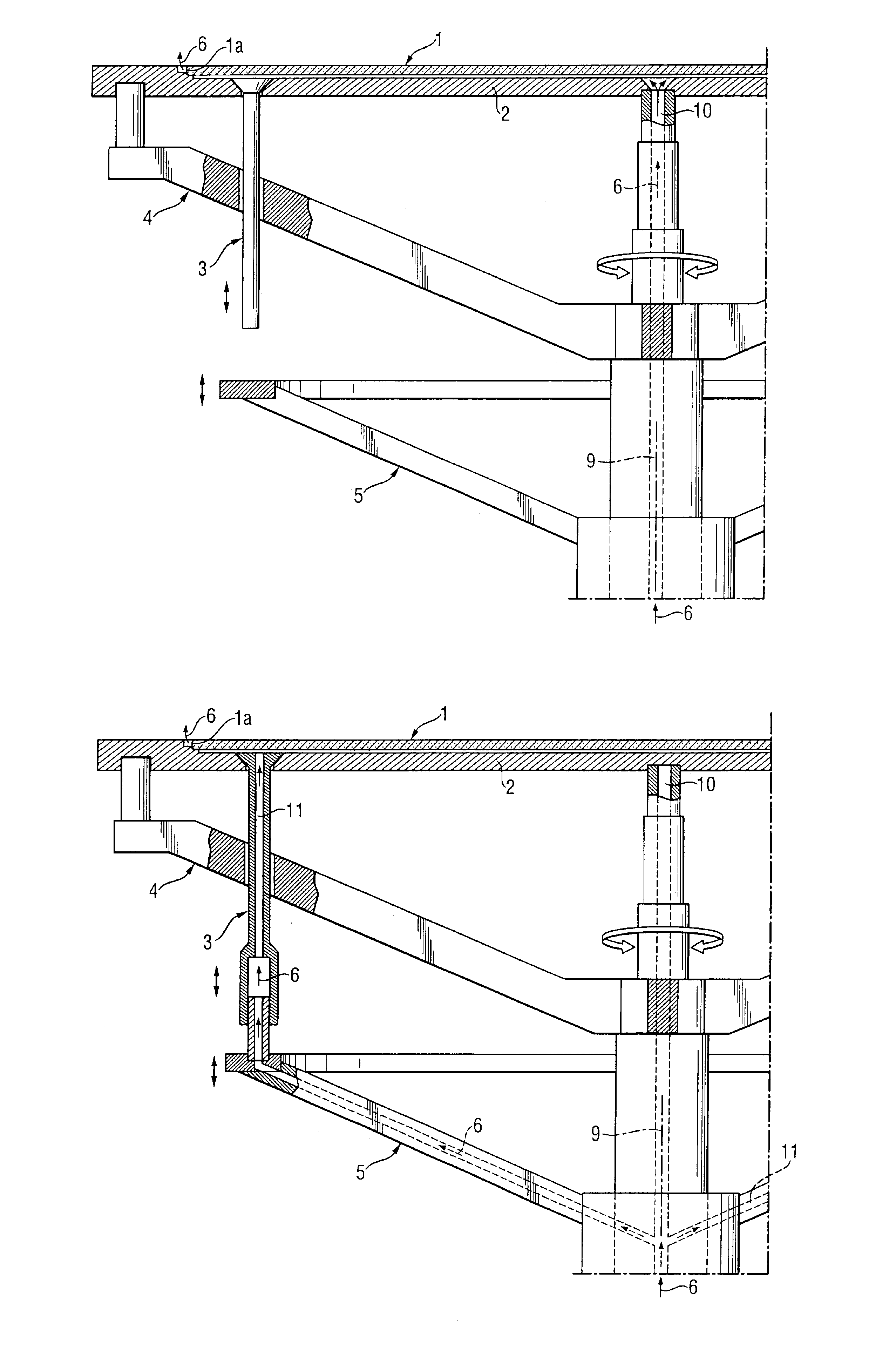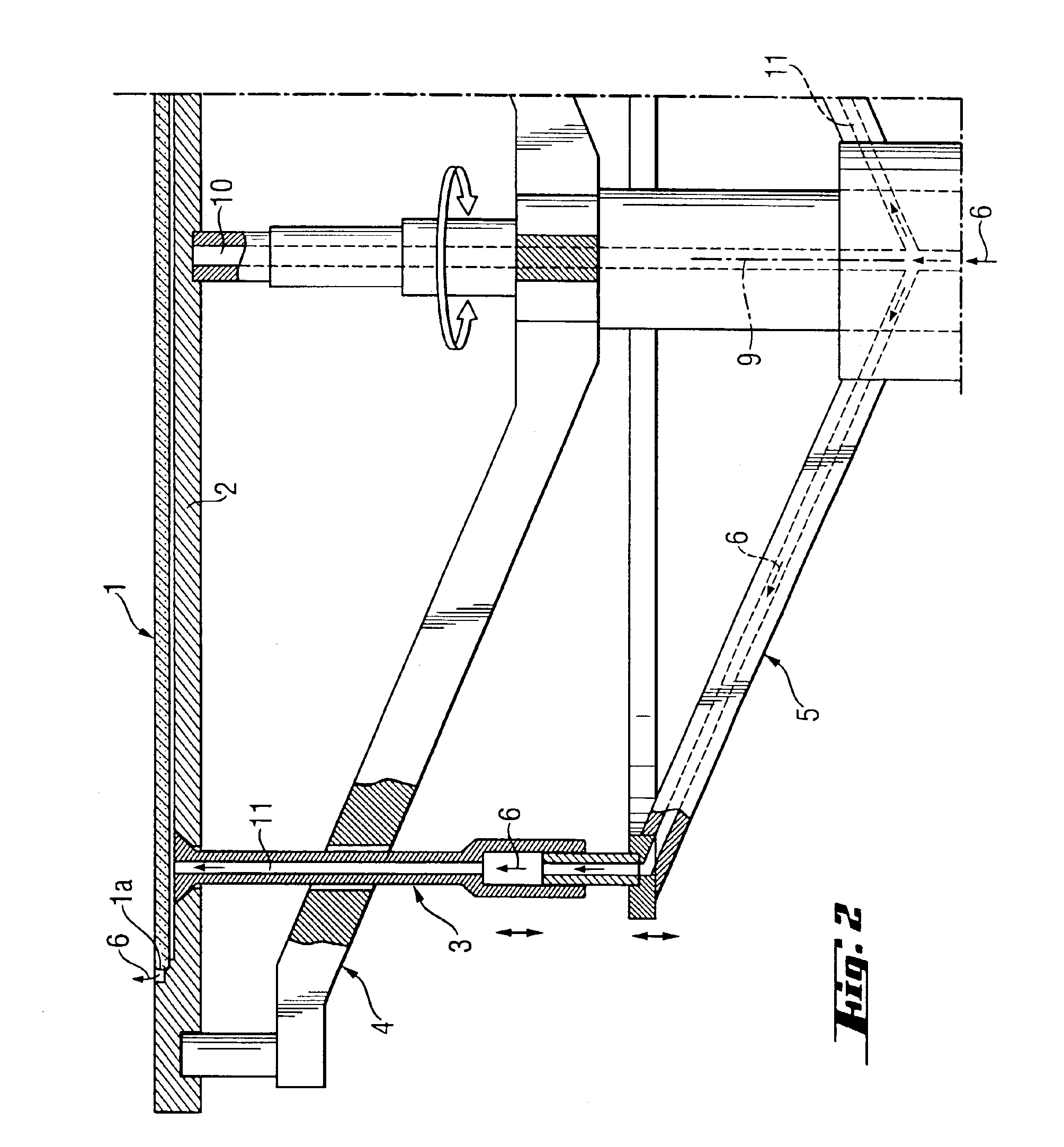Process and apparatus for epitaxially coating a semiconductor wafer and epitaxially coated semiconductor wafer
a technology of epitaxial coating and semiconductor wafer, applied in the direction of coating, crystal growth process, polycrystalline material growth, etc., can solve the problems of increasing metal contamination, unsatisfactory solution of autodoping problem, and inability to escape elements, etc., to avoid autodoping
- Summary
- Abstract
- Description
- Claims
- Application Information
AI Technical Summary
Benefits of technology
Problems solved by technology
Method used
Image
Examples
example
[0056]A silicon wafer with a diameter of 300 mm and a resistivity of 10 mΩcm was homoepitaxially coated in an epitaxy reactor at 1100° C. During the coating, the silicon wafer was rotated about its center axis at 32 revolutions per minute. The flow of hydrogen was 50 slm (standard liters per minute), the flow of trichlorosilane was 17 slm and the flow of diborane was 150 sccm (standard cubic centimeters per minute). Under these conditions, a 3 μm thick, boron-doped silicon layer with a resistivity of 5 Ωcm was deposited. According to the invention, argon was supplied during the epitaxial coating below the center of the silicon wafer, as shown in FIG. 1. The radius of, the feed was 1 cm. The recess in the susceptor (pocket) was designed in such a way that the distance between wafer back surface and the lowest point of the susceptor was 0.5 mm. The argon flowed in below the silicon wafer at a volumetric flow rate of 180 sccm. Under these conditions, a radial resistance variation on th...
PUM
| Property | Measurement | Unit |
|---|---|---|
| resistivity | aaaaa | aaaaa |
| resistivity | aaaaa | aaaaa |
| resistivity | aaaaa | aaaaa |
Abstract
Description
Claims
Application Information
 Login to View More
Login to View More - R&D
- Intellectual Property
- Life Sciences
- Materials
- Tech Scout
- Unparalleled Data Quality
- Higher Quality Content
- 60% Fewer Hallucinations
Browse by: Latest US Patents, China's latest patents, Technical Efficacy Thesaurus, Application Domain, Technology Topic, Popular Technical Reports.
© 2025 PatSnap. All rights reserved.Legal|Privacy policy|Modern Slavery Act Transparency Statement|Sitemap|About US| Contact US: help@patsnap.com



